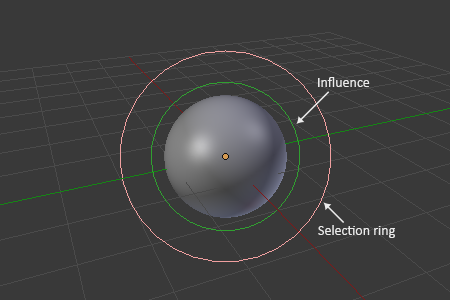Introdução¶
Metaball objects (short meta) are implicit surfaces, meaning that they are not explicitly defined by vertices (as meshes are) or control points (as surfaces are): they exist procedurally. Meta objects are literally mathematical formulas that are calculated on-the-fly by Blender.
Uma das características visuais mais distinguíveis das esferas-meta é sua aparência de um fluído mercurial, ou formas que se parecem com argila e que possuem um formato arredondado. Além disso, quando dois objetos do tipo esfera-meta se aproximam, eles começam a interagir entre si. Objetos do tipo esfera-meta são fundidos ou mesclados, como as gotículas de água assim o fazem, especialmente na gravidade zero (o que, em suma, as torna bem fáceis de manipular para a modelagem de fluxos de água quando você não quer fazer uma Simulação de fluidos completa). Caso os objetos de esfera-meta sejam movidos para longe uns dos outros, eles irão restaurar o seu formato original.
Each of these is defined by its own underlying mathematical structure, and you can at any time switch between them using the Active Element panel.
Typically Meta objects are used for special effects or as a basis for modeling. For example, you could use a collection of metas to form the initial shape of your model and then convert it to a mesh for further modeling or sculpting. Meta objects are also very efficient for ray tracing.
Aviso
Names of Meta objects are very important, as they define families, and only objects within a same family interact with each other. Unlike other object types, even editing (transformations) in Object Mode will affect the generated geometry within the edited families.
Visualização¶
In Object Mode, the calculated mesh is shown, along with a black «selection ring».

Meta Ball in Edit Mode.¶
In Edit Mode (Fig. Meta Ball in Edit Mode.), a meta is displayed as a mesh (either shaded or as black wireframe, but without any vertex of course), with two colored circles: a red one for selection (pink when selected), and a green one for a direct control of the meta’s stiffness (light green when active). Note that except for the scale transformation, having the green circle highlighted is equivalent to having the red one.